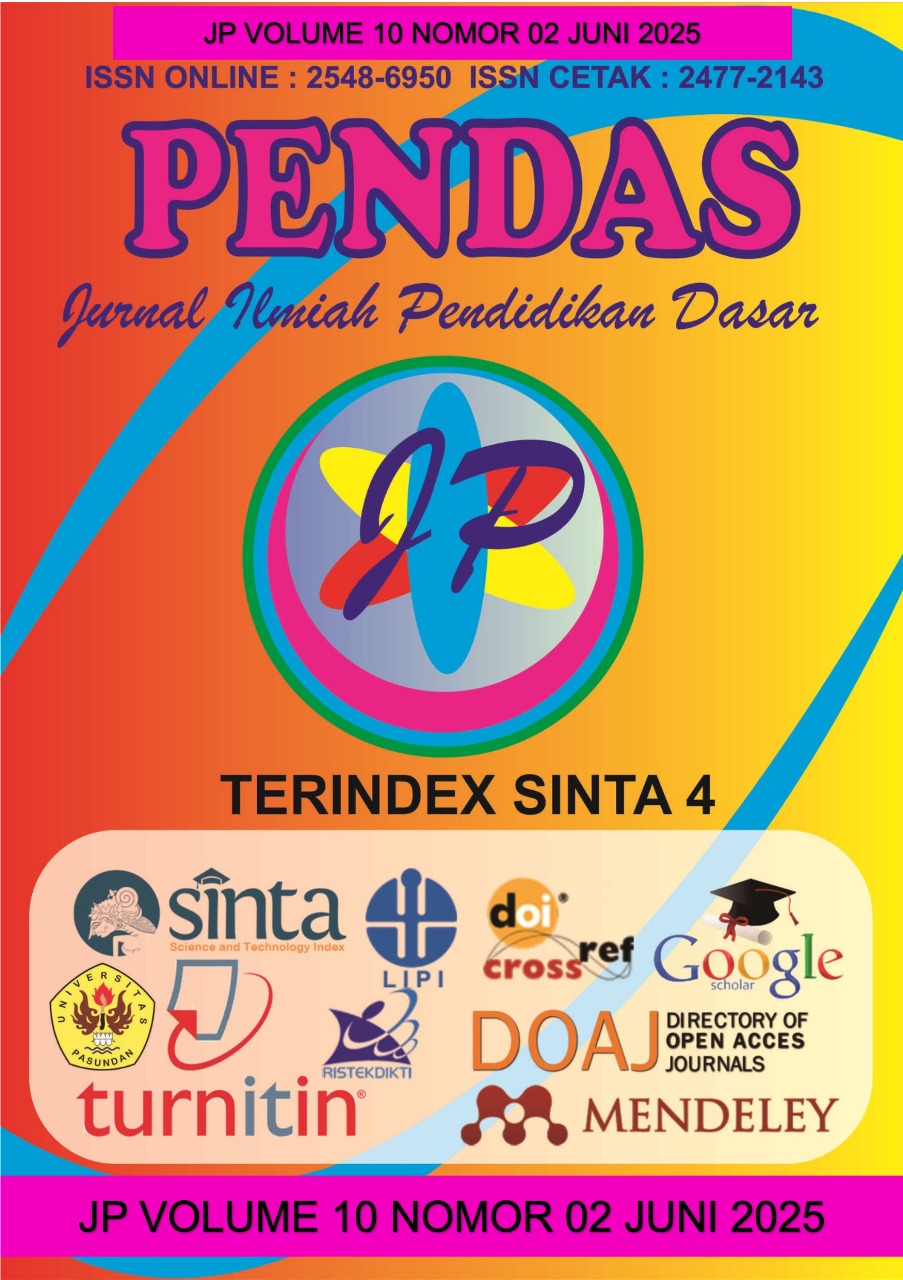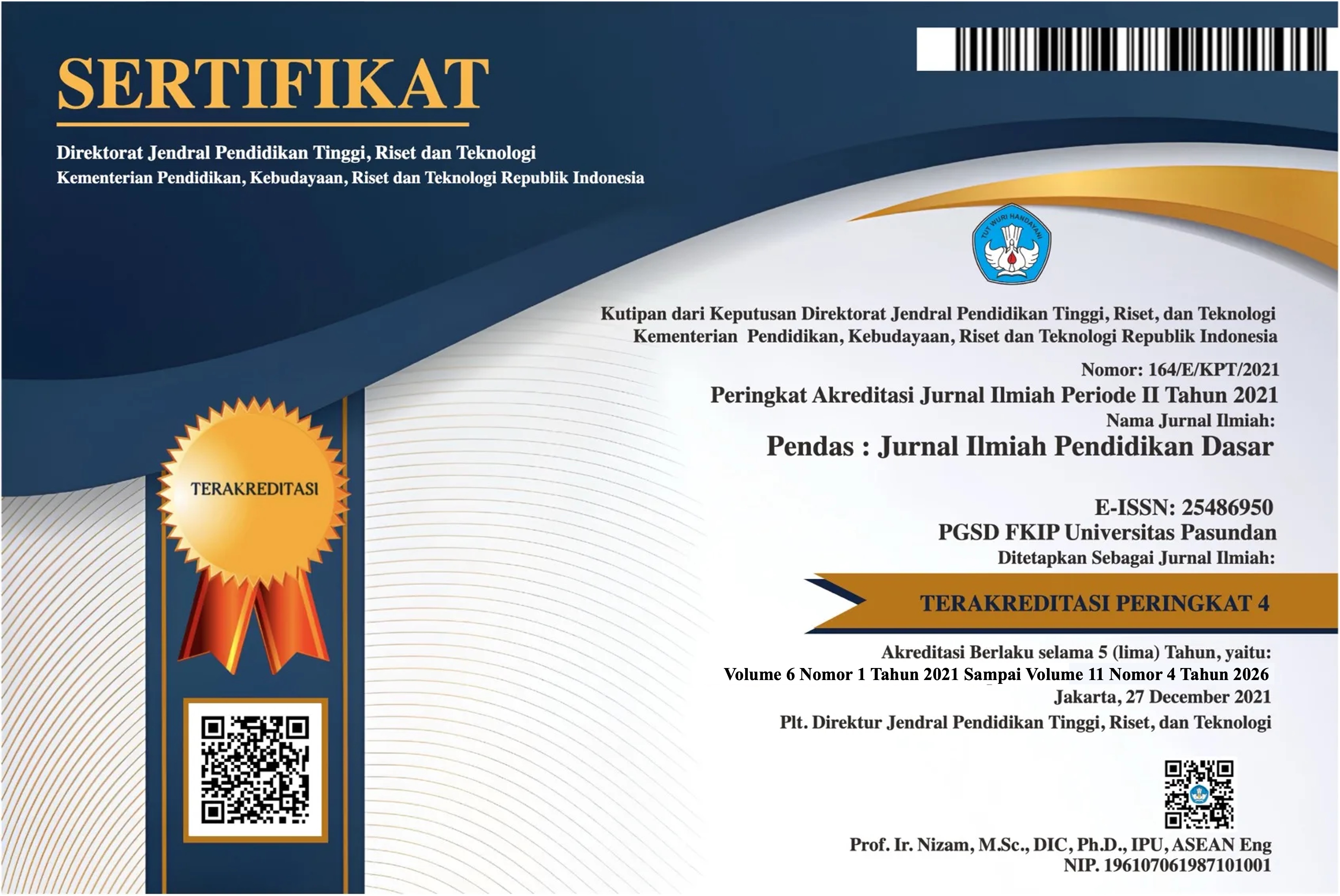MELESTARIKAN TRADISI: KEUNIKAN DAN KEINDAHAN AYUN LUCI DARI KERINCI
DOI:
https://doi.org/10.23969/jp.v10i2.23910Keywords:
Ayun Luci, Culturan Preservetion, elementary educatio, traditional dance, traditional music, local cultureAbstract
Ayun Luci is a traditional ceremony from the Kerinci community in Jambi Province, Indonesia, which holds deep spiritual and cultural values. This tradition is performed as an expression of gratitude and a prayer to God, seeking protection for rice crops during the grain-filling phase from pests and hoping for an abundant harvest. The ritual involves various cultural elements such as traditional chants (mantras), local culinary offerings, sacred symbols, and the performance of Asyeik dance accompanied by traditional music. However, in the face of modernization and globalization, the existence of this tradition is increasingly marginalized and at risk of extinction. The younger generation, as cultural successors, tend to be unfamiliar with the values and meanings embedded in such local wisdom. This study aims to explore strategies for preserving the Ayun Luci tradition through educational approaches, particularly by integrating traditional dance and music elements into learning activities at the elementary school level. Using a qualitative descriptive method through literature study, the research examines relevant sources related to culture-based education and traditional arts preservation. The findings reveal that developing Ayun Luci into a contextual performing art and incorporating it into local culture-based thematic learning can enhance students’ awareness and appreciation of cultural heritage. Furthermore, such integration promotes students’ artistic appreciation, strengthens cultural identity, and fosters a sense of pride in ancestral traditions. In conclusion, the preservation of Ayun Luci should not rely solely on customary communities but must also be supported by educational institutions. Through culturally responsive curriculum development, this tradition can be continually introduced, studied, and passed on to future generations in a sustainable manner.
Downloads
References
Bouvier, H. (2002). Lèbur: seni musik dan pertunjukan dalam masyarakat Madura (Vol. 14). Yayasan Obor Indonesia.
Hanafi Ardi, Seprianto Riski, & dkk. (2023). Ulasan Cerita Putri Tangguk dan Warisan Budaya di Daerah Sekitar Cerita Tersebut Berkembang. Jurnal Pendidikan Dan Konseling, 5(2), 2677–2680.
Manzis, I., Murba, A., Ulva, D. A., Dwi, R., & Putri, R. (2023). Menelusuri Keindahan Budaya Warisan : Seni Ayun Luci dari Kerinci yang Memukau. 7, 5835–5839.
OSIA SUTICA. (2023). Struktur Dan Gaya Gerak Asyik Dalam Tradisi Ritual Masyarakat Kabupaten Kerinci: Studi Kasus Perbandingan Asyik (Nukun Anak, Menta Gumeng, Dan Ayun Luci). Universitas Jambi, 03, 65–94. https://www.who.int/news-room/fact-sheets/detail/autism-spectrum-disorders
Pipit Muliyah, Dyah Aminatun, Sukma Septian Nasution, Tommy Hastomo, Setiana Sri Wahyuni Sitepu, T. (2020). In Journal GEEJ (Vol. 7, Issue 2).
Septriani, C. (2021). Estetika Tari Luci Genyi Di Sanggar Sekintang Dayo Jambi. Institut Seni Indonesia Yogyakarta.
SHELEMO, A. A. (2023). Nucl. Phys., 13(1), 104–116.
Syafiq, M. H. (2023). Menerka Kebudayaan Jambi. CV Brimedia Global.
Widyanto, S. D. (2025). Transformasi Ritual Ayun Luci Ke Tari Ayun Luci di Desa Koto Lua Kecamatan Siulak Mukai di Kabupaten Kerinci Provinsi Jambi The Transformation of the Luci Swing Ritual into the Luci Swing Dance in Koto Lua Village , Siulak Mukai District in Kerinci Regency , Jambi Province . X. https://doi.org/10.24036/saayun.vxix.xx
Downloads
Published
Issue
Section
License
Copyright (c) 2025 Pendas : Jurnal Ilmiah Pendidikan Dasar

This work is licensed under a Creative Commons Attribution 4.0 International License.



















